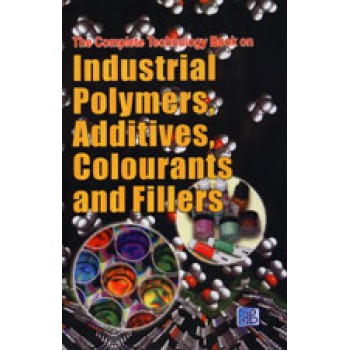The Complete Technology Book on Industrial Polymers, Additives, Colourants and Fillers
| Price: | Rs.1,100.00 |
Detail Of The Complete Technology Book on Industrial Polymers, Additives, Colourants and Fillers
| ISBN | 8178330091 |
| Pages | 512 |
| Language: | English |
| Product Code: | 1 |
| Size(in cm): | 21*13.5 cm |
| Weight(in grams): | 500(approx) |
Description:
The Indian plastic and polymer industry has taken great strides. In the last few decades, the industry has grown to the status of a leading sector in the country with a sizable base. The material is gaining notable importance in different spheres of activity and the per capita consumption is increasing at a fast pace. Numerous plastics and fibers are produced from synthetic polymers; containers from propylene, coating materials from PVC, packaging film from polyethylene, experimental apparatus from Teflon, stockings from nylon fiber, there are too many to mention them all. The reason why plastics are popular is that they may offer such advantages as transparency, self lubrication, light weight, flexibility, economy in fabricating and decorating. Properties of plastics can be modified through the use of fillers, reinforcing agents and chemical additives. Silicones are by far the most important industrial polymers and are based on silicon, an element abundantly available on our planet. Polymers are classified in three broad groups; addition polymers, condensation polymers and special polymers. It is well known that the major consumption of additives is in PVC compounds. Approximately 80% of additives are being used in PVC; however the left over 20% is consumed in compounding of other thermoplastics. Plastic master batches and fillers have their own importance in plastic processing industries. Colorants are the materials that give colour and opacity to plastics are chemically characterized as either pigments or dyes. Pigments are finely pulverized natural or synthetic particles which may be of inorganic or organic origin and insoluble in the matrix in which they are dispersed. Permanent red 2B is a mono azo pigment that is widely used in thermoplastics because it is inexpensive and has high tinting strength and good bleed resistance. Fillers are commonly employed in opaque PVC compounds to reduce cost and to improve electrical insulation properties, to improve deformation resistance of cables, to increase the hardness of a flooring compound and to reduce tackiness of highly plasticized compounds. Various calcium carbonate are used for general purpose work, china clay is commonly employed for electrical insulation, and asbestos for flooring applications. Also employed occasionally are the silicas and silicates, talc, light magnesium carbonate and barites (barium sulfate). Polymer Energy system is an award winning, innovative, proprietary process to convert waste plastics into renewable energy. Polymers are the most rapidly growing sector of the materials industry. No wonder polymers are found in everything from compact discs to high tech aerospace applications. On the basis of value added, Indian share of plastic products industry is about 0.5% of national GDP.
Some of the astonishing fundamentals of the book are industrial polymers, addition polymers
polyolefins, polyethylene, chlorinated polyethylene, cross linked polyethylene, linear low density polyethylene (LLDPE), high molecular weight polyethylene, high density polyethylene, ultrahigh molecular weight polyethylene, polypropylene, poly(vinyl chloride), stabilizers, plasticizers, extenders, mineral filled or glass bead/milled glass grades, antistatic/electro conductive grades, electroplatable grades, etc.
The present book enlightens the processing of industrial polymers, additives, colourant and fillers. This book is an invaluable resource to new entrepreneurs, technocrats, researchers, professionals etc.
Reviews (0)
Write a review
Your Name:Your Review:
Note: HTML is not translated!
Rating: Bad Good
Enter the code in the box below:
Recently Viewed



 |
| 
